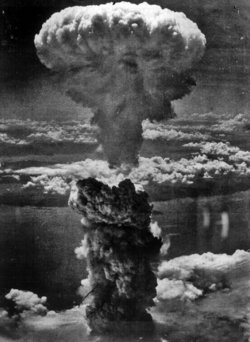Ian Sample, science correspondent
Friday January 20, 2006
The Guardian
Known as Orion, the £100m project is the closest Britain gets to extreme engineering. The world's most powerful laser will be capable of recreating for a fraction of a second the conditions found at the heart of a thermonuclear explosion.
At the Atomic Weapons Establishment (AWE) in Aldermaston, Britain's nuclear warhead factory and intended home to Orion, the laser is seen as a vital investment. It will allow weapons scientists to fine tune the complex computer models used to simulate nuclear explosions. The other hope is that, in an era where live tests are banned, a world-class piece of shiny new kit will stop Britain's bright young scientists losing interest and drifting into other jobs, leading to a future where the country's expertise is confined to those who remember the cold war.
Next Wednesday, Orion faces its final hurdle before work on the project can begin in earnest. It is West Berkshire council's last chance to raise objections to Ministry of Defence proposals to build Orion and a number of other facilities. The council cannot deny planning permission because as an MoD project, Orion is covered by crown immunity.
The project has inflamed anti-nuclear campaigners, who believe Orion may be used to develop next generation nuclear weapons and want the matter settled by a public inquiry. The Office of the Deputy Prime Minister has received 155 letters opposing the project. More than 200 have been sent to West Berkshire council.
"This is of major national importance and shouldn't be put through on the nod at a local planning committee meeting in a church hall," said Di MacDonald of the Nuclear Information Service, a nuclear disarmament group. "Given the number of objections, the planning committee would be well within its remit to pass this back to the government to raise a public inquiry."
Richard Stokes, leader of Slough borough council, believes the MoD is trying to push Orion through before the law on crown immunity changes in April. "After that time, they will need to apply for planning permission like everyone else and we're hoping we can delay the decision until that time," he said.
It is hoped to get Orion running by 2010, when it will become the focus of research for 100 AWE scientists. Orion subjects ordinary materials to extraordinary forces. For each test, a fragment of material one millimetre across is placed inside a six tonne hollow aluminium sphere. When the laser is fired, the fragment is bombarded with laser light from 10 angles, crunching it to the width of a human hair. Almost simultaneously, two other laser beams fire, heating the sample to 3m degrees C.
"[It] replicates in the lab on a very small scale conditions that would exist at the heart of a nuclear detonation on a minute scale for one thousandth of a millionth of a second," said an MoD spokesman.
Whether Orion will be used to design nuclear devices is unclear, say critics. While nuclear tests are banned, developing warheads is not, and with Britain's nuclear-armed submarine fleet rusting fast, the government is under pressure to review its Trident nuclear missile system before the end of the current parliament. The defence secretary, John Reid's announcement in October that Aldermaston will receive £1.5bn funding until 2008, an increase of more than £400m a year, has raised concerns over what research the government plans. Frank Barnaby, a former AWE weapons scientist and now nuclear issues consultant at the Oxford Research Group, believes that Orion would help in the development of new warheads only indirectly. "I think it's a genuine misunderstanding. There are so many designs already available, it's hard to see the need for a new one," he said.
"What you do need is to maintain a team of scientists who could develop a nuclear weapon if you ever wanted them to and that is a national asset. But in order to get young people to join and stay, you've got to excite them. Orion and supercomputers have a definite element of keeping together the team and getting them to stay."
Special report
The nuclear industry







No comments:
Post a Comment